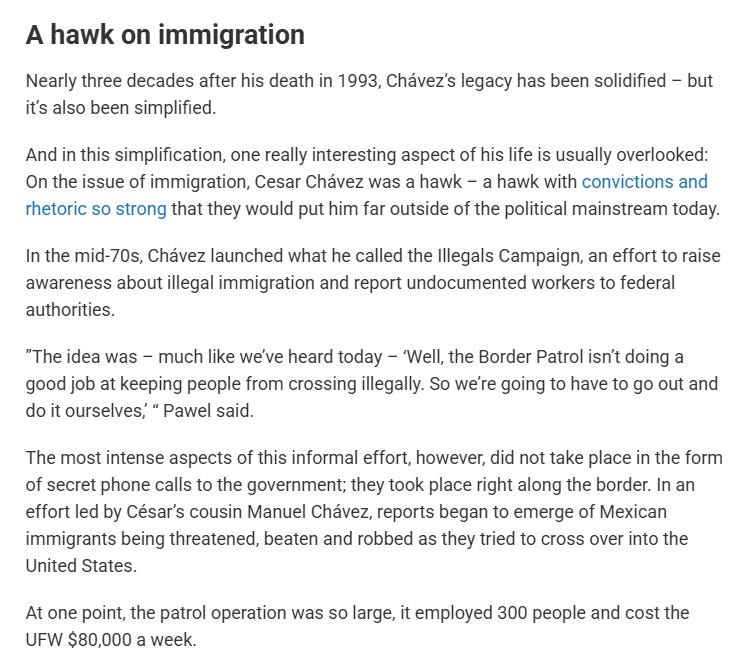Beyond California: Becoming Denmark
Discerning Takers from Makers, Finance from Production, Poison from Cure: The Jungian Path to Integrated Prosperity in a World of Fractured Psyches.
The pharmakon is a poison—but one that paradoxically doubles as its own cure. Snake venom, in the right dose, becomes antivenom; alcohol, taken the morning after, can dull a hangover. It is both toxin and antidote, its effect determined by the dose, the timing, and the hand that administers it.
The cordon sanitaire, a firewall between establishment and populist parties, serves as democracy’s crude tourniquet, meant to stanch the venom’s spread. But remedies, like poisons, are volatile—what heals in one era may harm in another.
After World War II, West Germany created the Bundesamt für Verfassungsschutz (BfV), an agency meant to protect the fragile democracy from being infected by the gangrene of the past. Border walls were useless against an enemy within, so the BfV functioned as an internal antiseptic, suppressing dangerous ideology before it could spread. But in a paradox worthy of Brecht, this firewall—funded by the occupying Allies to prevent fascism’s return—was manned largely by veterans of the old order, men who had once sworn oaths to the Reich. The past, unresolved, dictated the present, and soon these former officers and bureaucrats diagnosed communism, not fascism, as the more urgent contagion.
Yet poison and remedy trade places over time. The BfV, for subsequent years an anti-communist bulwark, is today an instrument of the technocratic class that governs the EU. Its mandate has not changed—preserving ideological hygiene—but the toxin it seeks to neutralize has. The red menace has faded, replaced by the spectre of populism. The same apparatus that once hunted communists now polices what it deems to be mean tweets and hate takes against mass migration. Democracy, it turns out, is too dangerous to be left to the demos.
Across post-Cold War Europe, the cordon sanitaire against populism has become the preferred mechanism of containment against political parties that reject the globalist dominant paradigm. Yet the irony is that these quarantines often function less like barriers and more like incubators, intensifying the very forces they aim to suppress.
Sunday’s German elections proved the point. In a case of bend but don’t break, the firewall held—barely. Despite Elon Musk deploying his X platform as ideological heavy artillery, hammering away at Germany’s firewalls, the AfD, while indeed doubling its vote share, was capped at 20%.
But this defensive success comes at a cost. Germany’s refusal to police its national borders has only heightened the need to enforce ideological frontiers within its own nation. The result is a counterinsurgency strategy that mirrors the classic “oil spot” doctrine—gradually suppressing insurgent forces by isolating and containing them. This time, the strategy worked. But how long before containment fails and the insurgency breaches into the halls of power, as we have seen recently in the United States?
Denmark offers a counterexample. Instead of exorcising a looming populist right, the Danish Social Democrats absorbed its concerns and transmuted them into policy. They understood that an ounce of good policy is worth a pound of quarantine. By directly addressing the anxieties of their indigenous working class over immigration, they defused the issue before nationalist parties could weaponize it.
No internal cordon sanitaire was needed because the strain was contained at the borders—not through domestic online witch hunts or ideological purges. The lesson is clear: even in a heavily financialized and globalized world, Denmark has preserved the economic nationalism that populists in neighbouring countries are fiercely fighting to reclaim.
Two Hawks
Once, the left understood borders. In the 1970s, United Farm Workers leader César Chávez patrolled the U.S.-Mexico frontier, denouncing illegal immigration as a strike-breaker’s tool—Big Ag’s way of undercutting labor scarcity and breaking worker solidarity.

In 2015, Bernie Sanders called open borders a "Koch brothers proposal," recognizing mass migration as a mechanism to depress wages and empower oligarchs. But by 2016, he had reversed course, falling in line with the very establishment he once opposed. Instead of mounting a populist challenge to neoliberalism, Sanders joined a goodthinker cordon sanitaire against Trump—even as both, in their own ways, preached economic nationalism.
Had 2015 Bernie waged war on the Democrats instead of reinventing himself as woke 2016 Bernie—and losing to Hillary—Trump might have remained in the shadows. But that door closed, and now Trump and Musk revel in their Tech Bro Spring.
Perhaps in a decade, a new Bernie will rise—one who recalls both Chávez and the vision of 2015 Bernie. Perhaps he’ll even be named Bernardo. With Latino voters shifting toward Trump at accelerating rates, immigration itself may prove to be a pharmakon for the financial elites—what they once saw as a cure for the incorrigible white working class becoming, from their perspective, the poison of left populism. The cordon sanitaire they built to keep these two communities apart is beginning to disintegrate, as working-class Latinos and whites find common ground—not just in shared grievances, but in a unified front against oligarchic rule.
Scandinavia Dreaming?
Bernie Sanders’s admiration for it is well known, but even conservative thinker Francis Fukuyama hails Denmark as an archetype of success—a model for the world to follow. He argues that Denmark’s social system is the envy of the world because it fuses economic dynamism with social cohesion, proving that a robust welfare state and a competitive economy are mutually reinforcing.
Fukuyama might have added that for this balance to hold, the welfare state must adopt an economic nationalist outlook—putting Danes first—by prioritizing its producers while minimizing dependents.
Denmark recently made headlines when Trump, in a characteristic bout of bluster, floated the idea of buying Greenland. In a moment of geopolitical farce, Denmark jokingly offered to buy California in return. A petition cheerfully declared, "Bring hygge to Hollywood!" Anti-Trump Californians, weary of red hats and endless culture wars, were overjoyed, fantasizing about Danish modernism and universal healthcare. The dream was seductive—escape America’s dysfunction by selling out to the sensible Nordics.
But will Californians still feel hygge—that distinctly Danish ideal of cozy harmony—when they discover that Denmark’s strict immigration policies include mandatory language tests, stringent asylum laws, and even state programs for repatriation? While Trump merely talks about ‘sending them back,’ Denmark quietly puts it into practice.
Perhaps 2015 Bernie sensed something he would later forget: that the very Denmark he so admired also understood the importance of borders.
Donald and Bernie: Populism’s Shadow and Light
Trump and 2015 Bernie were Jungian twins—estranged soulmates of the populist moment. They embodied the two halves of a missing synthesis: economic nationalism on one side, social democracy on the other.
In Jungian psychology, the Persona is the mask we wear—the socially acceptable face we present to the world—while the Shadow is the repressed, untamed part of the psyche, the force of raw instinct and chaos. True integration requires acknowledging and working with the Shadow, not rejecting it outright.
Bernie, with his polite, academic socialism, embodied the Persona: respectable, idealistic, reformist. Trump, on the other hand, was pure Shadow—crude, disruptive, a battering ram against the neoliberal order. Together, they could have formed a coherent populist movement, one that both tore down a corrupt regime and built something in its place. But 2016 Bernie refused the Shadow. Instead of integrating Trump’s destruction into a creative political synthesis, he meekly re-joined the very system that cast them both as enemies.
The result? A populist right severed from economic justice, and a progressive left that now defends oligarchic power under the guise of “democracy preservation” and corporate-mandated social justice. The dialectic was aborted.
The financialized system survived—until it didn’t. All signs point to Trump 2.0 being an inflection point toward a new system. This time, the wrecking ball may be too much to withstand.
From Raggeds to Riches
Parasites exist at both ends of the economic spectrum. Marx had a term for the criminal underclass—the lumpenproletariat—a chaotic force that disrupts productive society. The German root lumpen means “ragged” and, over time, became a pejorative prefix, signifying something degraded, shabby, or parasitic. Contrary to the romanticism of today’s left, Marx saw them not as revolutionary allies but as a reactionary burden—a parasitic drag on the working class.
El Salvador’s President Bukele has launched the most aggressive effort in modern history to liquidate the lumpen-proletariat as a class. His vast prison networks have effectively quarantined the Shadow—but without integration, it remains an open question whether the problem is solved or merely contained.
At the other end of the spectrum is lumpen-finance—not investment in industrial capitalism, but feudal rent-seeking, where rentiers siphon off wealth without creating value. BlackRock monopolizes entire neighbourhoods, transforming shelter into a speculative asset. Hedge funds cannibalize struggling industries, strip pensions, and offshore factories. If the lumpen-proles are parasites on the streets, lumpen-finance is the parasite of gated enclaves—extracting wealth from the productive economy under the guise of high finance.
Few nations attempt to rein in predatory finance. One that does is China, which, unlike the U.S., treats finance as a public utility. Its banks serve state priorities, not private speculation, and any rising financial elites are crushed before they consolidate power. Tech CEOs in China exist at the mercy of the ruling class of Red Engineers—not the other way around.
The divide is clear: economic nationalists champion production. They stand with the makers—both workers and management—against the takers. The financial elite, by contrast, sees the world in reverse: Wall Street and crime-ridden mean streets over factory floors and productive entrepreneurs. The left, before losing itself in identity politics, at least half-understood this—it sought to occupy Wall Street while still indulging the gangster. Now, it defends both, propping up bankers while decriminalizing crime.
The populist right, for its part, still clings to a prosperity fetish, failing to distinguish between fortunes built through production and those plundered through speculation and rent-seeking. But there are signs of awakening. The populist wing of the right is beginning to see that Wall Street is as much an enemy as street-level looters—perhaps the greater one.
And there are signs of convergence. The Bernie Bros and the populist wing of the Tech Bros—long assumed to be natural enemies—are finding common ground, often in the emerging dissident spheres of online discourse. One represents a demand for social democracy, the other for technological ambition untethered from Wall Street. Far from contradicting each other, they may be two sides of the same economic populist coin.
Ghosts of Denmark Past
Denmark buying California may be a joke, but it wouldn’t be the first time Copenhagen shaped the Golden State.
In the 1930s, Walt Disney visited Tivoli Gardens, a Danish amusement park founded in 1843. He was captivated by its intimate design—its blend of fantasy and order, its sense of play without excess. Inspired, he built Disneyland in Anaheim, transplanting a Nordic dream into the sun-drenched orchards of California.
It didn’t stop there. The California of my childhood was a Danish-style worker’s paradise—one bathed in relentless sunshine and charged with the optimism of a new-world future. My father, a high school dropout, could still afford a house with a yard, two cars, and to raise four children. We lived not in luxury, but in hygge—not the Danish kind, wrapped in blankets by the fire, but the California version: evening fog oozing lazily through the coastal hills, cooling off blistering valley days.
Though my father’s social position was modest, his salary stretched beyond mere survival. And crucially, his surplus stayed local—not siphoned off to the old country or locked away in rentier vaults, but recirculated, each dollar enriching the community as it passed from hand to hand.
Bernie Sanders may call himself a socialist, but his vision owes less to Marx than to my childhood in the golden age of industrial capitalism. Affordable healthcare, housing, education, and food—this was mid-century California. Public or private, it didn’t matter. What mattered was that everything was “good enough.”
Then the seasons turned. Financial elites and the criminal underclass ascended. The takers took. The comfortable modesty of the makers was shattered—taxed, scolded, and driven from paradise. Once a tethered meridian, balancing prosperity with stability, California became a land of violent social extremes.
Silicon Valley conjured unimaginable wealth, yet it settled unevenly—stock options and venture capital for some, tent cities and shattered lives for others. The wealthy erected cordons sanitaires of private security and zoning laws, retreating behind gates as disorder festered beyond their walls.
Silicon Valley’s wealth, like any pharmakon, is both poison and remedy—an engine of progress, yet a force that unmoors those it leaves behind. What was once a Danish-style worker’s haven in California has been hollowed out, its economic security drowned in speculation and disorder.
Meanwhile, Denmark, surrounded on all sides by financialization, integrated its economically productive Shadow while adopting a Persona of progressiveness. When the globalist elite demanded it “load-share” by absorbing a lumpen multitude, Denmark initially acquiesced.
But as the first stirrings of populist unrest emerged, the Danish left faced a choice: stand by their working class and reject mass migration, or align with the bankers, their pride parades, and their diversity rhetoric, keeping the floodgates open. In stark contrast to California, the Danish left recognized that their workers were not a disease requiring a cordon sanitaire, but the cure to a hollowed-out economy, even in an era of growing robotics and AI.
Now, California progressives dream of importing Denmark’s hygge—as if social cohesion were just another exotic commodity, like Belgian beer or Korean BBQ. But social peace isn’t a boutique lifestyle; it’s a hard-won equilibrium—a pact between the productive classes, united against both wings of the grasping parasites. The goal in dealing with Lumpens United isn’t annihilation but reintegration, pulling these Shadow figures back into the productive social psyche. Without that process, California will continue its decline toward another Scandinavian word: maelstrom.
To cling to either the Shadow or the Persona is to court disintegration. In California, the fracture between these two forms a dissonance, a maelstrom that churns the body politic into chaos. It is a tension left unresolved—a pharmakon—where the dosage determines whether it heals or poisons, this volatile imbalance tipping dangerously toward social venom.
The repressed Shadow, left unintegrated, becomes a corrosive force, while the Persona, too rigid to adapt, no longer serves as a bridge to the social whole. In this dialectic’s rupture, what remains is not synthesis, but fragmentation; the body politic is left adrift in a storm of its own making.
In contrast, Denmark offers us the image of what could be: the integration of the Shadow and the Persona, not as opposites, but as companions in the search for social cohesion. Here, the pharmakon is no longer poison, but medicine. The tension between the darker, more chaotic forces and the idealized social face becomes the means through which the nation moves from disarray to harmony, from maelstrom to hygge.
Denmark does not place a cordon sanitaire around its populist Shadow, nor does it surrender to an idealized image of a progressive globalist Persona. Instead, it transfigures them both into a social unity that transcends the friction between them, offering us the possibility of a society that is both whole and at peace.








Kevin, as usual, your thinking is refreshing and reflective. Not many people know that tiny Denmark is home to:
1. Bang & Olafson
2. Maersk
3. Lego
4. Worlds Michelin star eateries
5. Well trained special forces
6. Novo Nordisk ( Wegovy, Ozempic)
And exceptionally attractive women!
California of the 40s - 60s was a cohesive, literate, high trust society. Much of the population influx was WW2 veterans, their families, and war industry workers. It is impossible to have that when a huge percentage of the population has no interest in assimilation, is often not literate in their home language (much less English) and thinks of “home” or “their country” as somewhere else. Many came to California because of easy access, free stuff, and loose enforcement. There was also a thriving business and industrial base, with low taxes, cheap energy, and a business friendly government. These days California and the EU share all the destructive elements and few to none of the others. Throw in political and free speech suppression and it’s no surprise the industrious and wealthy (those who can) are leaving both places.